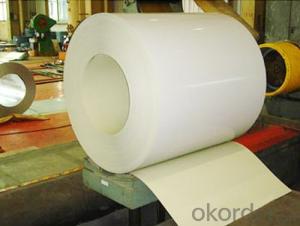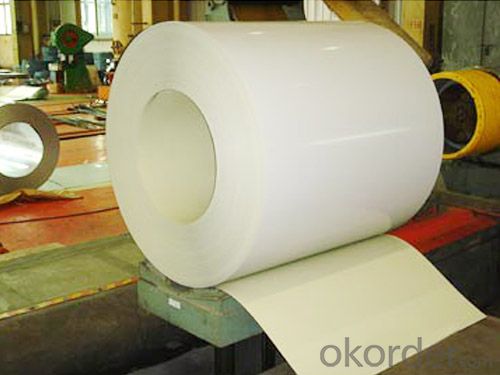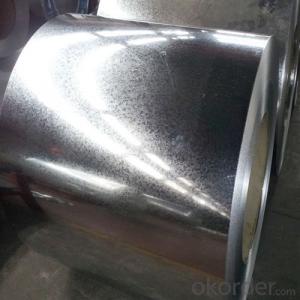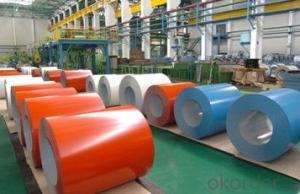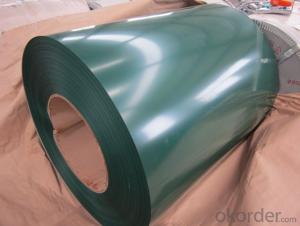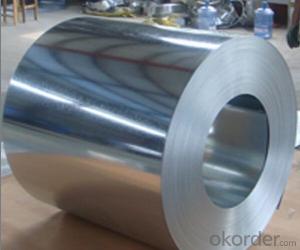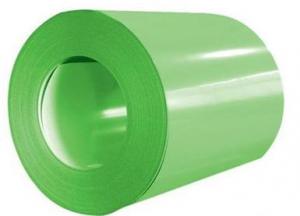Pre-Painted Hot Dip Galvanized Steel Coil
- Loading Port:
- Tianjin
- Payment Terms:
- TT OR LC
- Min Order Qty:
- 25 m.t.
- Supply Capability:
- 20000 m.t./month
OKorder Service Pledge
OKorder Financial Service
You Might Also Like
1. Pre-Painted Galvanized/Aluzinc Steel Coil Description:
With GI as base material, after pretreatment (degrease and chemical treatment ) and liquid dope with several layers of color, then after firing and cooling, finally the plate steel is called pre-painted galvanized (aluzinc) steel. Pre-painted galvanized steel is good capable of decoration, molding, corrosion resistance. It generally displays superior workability, durability and weather resistance.
2.Main Features of the Pre-Painted Galvanized/Aluzinc Steel Coil:
• Excellent process capability
• Smooth and flat surface
• Workability, durability
• Excellent heat resistance performance
• High strength
• Good formability
• Good visual effect
3.Pre-Painted Galvanized/Aluzinc Steel Coil Images
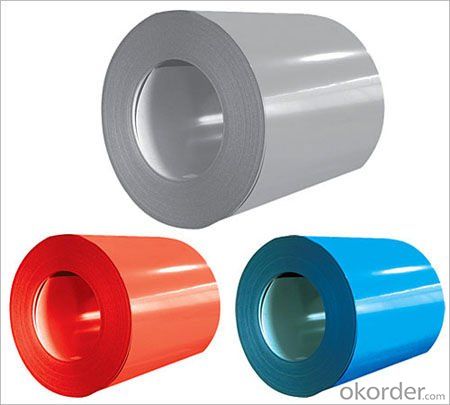
4.Pre-Painted Galvanized/Aluzinc Steel Coil Specification
Standard: AISI, ASTM, BS, DIN, GB, JIS
Grade: DX51D, DX52D
Thickness: 0.17-2.0mm
Brand Name: KMRLON
Model Number: coil
Type: Steel Coil
Technique: Cold Rolled
Surface Treatment: Coated
Application: Boiler Plate
Special Use: High-strength Steel Plate
Width: 20-1250mm
Length: customized
commoidty: pre-painted galvanized steel coil
Thickness: 0.13-4.0mm
width: 20-1250mm
zinc coating: 40-180g/m2
printing thickness: top side: 20+/-5 microns, back side: 5-7 microns
color: all RAL color
surface treatment: color coated
coil weight: 4-7 tons
coil ID: 508/610mm
packaging: standard seaworthy packing
5.FAQ of Pre-Painted Galvanized/Aluzinc Steel Coil
1. What’s the application of this product?
Roof, roof structure, surface sheet of balcony, frame of window, etc.
2. What’s the brand of the paint?
We use the best brand of all of the word—AKZO.
3. How about your company?
A world class manufacturer & supplier of castings forging in carbon steel and alloy steel,is one of the large-scale professional investment casting production bases in China,consisting of both casting foundry forging and machining factory. Annually more than 8000 tons Precision casting and forging parts are exported to markets in Europe,America and Japan. OEM casting and forging service available according to customer’s requirements.
4. How to guarantee the quality of the products?
We have established the international advanced quality management system,every link from raw material to final product we have strict quality test;We resolutely put an end to unqualified products flowing into the market. At the same time, we will provide necessary follow-up service assurance.
5. How long can we receive the product after purchase?
Usually within thirty working days after receiving buyer’s advance payment or LC. We will arrange the factory manufacturing as soon as possible. The cargo readiness usually takes 15-25 days, but the shipment will depend on the vessel situation.
- Q: What are the different types of coil edge trimming machines?
- In the market, one can find a variety of coil edge trimming machines. These machines are specifically designed for the purpose of trimming the edges of coils or rolls made from different materials like metal, paper, plastic, or fabric. Each machine type possesses unique features and capabilities to cater to specific trimming needs. 1. Manual Edge Trimmers: These machines require manual operation where an operator feeds the coil and trims the edges using a cutting tool or blade. Manual edge trimmers are suitable for trimming applications with low volumes and rely on the skill and precision of the operator. 2. Semi-automatic Edge Trimmers: These machines offer automated feeding mechanisms to assist in the coil feeding process. However, the operator still performs the trimming manually using a cutting tool. The feeding mechanism reduces manual effort and increases productivity. 3. Automatic Edge Trimmers: These fully automated machines require minimal operator intervention. Equipped with advanced sensors and controls, they ensure precise and consistent trimming of coil edges. Automatic edge trimmers can handle high volumes of coils and are often integrated into production lines for continuous trimming operations. 4. Rotary Blade Edge Trimmers: These machines utilize high-speed rotating blades to trim coil edges with precision. Commonly used for plastic or fabric coils, they provide clean and smooth cuts. 5. Guillotine Edge Trimmers: These machines employ a guillotine-like cutting mechanism to trim coil edges. The cutting blade moves vertically, resulting in straight and accurate cuts. Guillotine edge trimmers are suitable for trimming metal or paper coils. 6. Laser Edge Trimmers: These machines adopt laser technology to trim coil edges. The laser beam ensures clean and precise cuts, making them ideal for delicate or high-value materials. The choice of the appropriate coil edge trimming machine depends on the specific requirements of the application. Factors such as material type, coil dimensions, trimming precision, and production volume should be taken into consideration. Each machine type has its own advantages and limitations.
- Q: How are steel coils inspected for coil set?
- Steel coils are inspected for coil set using a variety of methods and equipment. Coil set refers to the curvature or shape of the coil, which can impact its performance and usability in various applications. One common method of inspecting steel coils for coil set is through visual inspection. Experienced operators or inspectors carefully examine the coils for any visible deformities or irregularities in their shape. This can be done by unrolling a portion of the coil and checking for any signs of buckling, twisting, or unevenness. Visual inspection is a straightforward and cost-effective way to identify obvious coil set issues. In addition to visual inspection, more advanced techniques are also used to accurately measure and quantify coil set. One such method is the use of a straight edge or a template. The straight edge is placed along the length or width of the unrolled portion of the coil, and any gaps or deviations from the straight edge indicate the presence of coil set. This method provides a more precise measurement of the extent and severity of the coil set. Another common technique is the use of specialized tools such as a non-contact laser measurement system. This system utilizes lasers to project a line on the surface of the coil and measures the distance between the line and the coil. Any variations in this distance indicate the presence of coil set. This method is highly accurate and provides detailed data about the coil's shape and curvature. Other methods may include using mechanical devices such as rollers or tensioners to unroll and measure the coil's shape. These devices apply controlled pressure to the coil to straighten it out, and any resistance or deviations encountered during the process are indications of coil set. Overall, the inspection of steel coils for coil set involves a combination of visual examination and precise measurement techniques. These methods help identify and quantify any deformities or irregularities in the coil's shape, allowing manufacturers and customers to make informed decisions about the usability and quality of the steel coils.
- Q: How are steel coils used in the manufacturing of structural components?
- Steel coils are used in the manufacturing of structural components by being processed through various techniques such as cutting, bending, and welding to form the desired shapes and sizes. These coils serve as the raw material for fabricating beams, columns, and other structural elements used in buildings, bridges, and infrastructure projects. The high strength and durability of steel make it an ideal choice for constructing load-bearing components, ensuring the stability and integrity of the structures.
- Q: I bought a damascus steel knife. It will be used for display. Nothing like hunting/skinning. If It is just sitting around, will it rust? (assuming that it isn't getting wet) Thanks for the help.
- Damascus Steel Rust
- Q: What are the different types of steel coil packaging materials for export?
- Various steel coil packaging materials are commonly utilized for export. These include: 1. Steel Strapping: A frequently employed option, steel strapping ensures robust and reliable packaging for steel coils. It offers excellent protection during transportation and is available in different widths and thicknesses to accommodate varying coil sizes. 2. Stretch Film: This flexible and elastic material is often employed to wrap steel coils securely. By preventing shifting or falling during transit, stretch film ensures tight and dependable packaging. Moreover, its lightweight nature aids in reducing shipping costs. 3. Corrugated Cardboard: Frequently used as an outer packaging material, corrugated cardboard provides additional protection against external impacts and acts as a cushioning material. It is available in various strengths and sizes to suit different coil dimensions. 4. Wooden Crates: Wooden crates are a popular choice for packing larger steel coils. They offer a sturdy and robust packaging solution, effectively safeguarding against impacts, moisture, and other environmental factors. These crates can be customized to fit specific coil sizes and are often employed for heavy-duty or long-distance shipments. 5. Plastic Strapping: Plastic strapping serves as an alternative to steel strapping, particularly for lighter coils. It is lightweight, easy to handle, and resistant to rust and corrosion. Plastic strapping is available in different colors, facilitating easy identification and sorting. 6. VCI (Volatile Corrosion Inhibitor) Packaging: VCI packaging materials are specifically used to protect steel coils from corrosion during export. These materials release a vapor that forms a protective layer on the surface of the coils, preventing rust and corrosion even in high humidity or harsh environments. When selecting the appropriate packaging material for export, it is crucial to consider the size, weight, and specific requirements of the steel coils. Additionally, adherence to international shipping regulations and standards is essential to ensure a safe and efficient transportation process.
- Q: Explain how you could make plastic sink and steel float?
- plastic can be denser than water. Make it a brick and it sinks. Ships float because they are mostly air - surrounded by steel.
- Q: Will any modified choke or improved Cylinder choke be safe to use with steel shot? If these are safe, which is better for duck or goose hunting?
- This Site Might Help You. RE: Choke tubes for steel shot? Will any modified choke or improved Cylinder choke be safe to use with steel shot? If these are safe, which is better for duck or goose hunting?
- Q: How are steel coils used in the manufacturing of construction equipment?
- Steel coils are used in the manufacturing of construction equipment as they provide a strong and durable material for various components. These coils are shaped and processed into different parts, such as frames, chassis, and reinforcements, which enhance the structural integrity and overall performance of construction machinery.
- Q: What are the common methods of protecting steel coils from corrosion during storage?
- There are several common methods used to protect steel coils from corrosion during storage. These methods are employed to prevent moisture and other environmental elements from coming into contact with the steel coils, which can lead to corrosion. 1. VCI (Volatile Corrosion Inhibitor) Packaging: VCI packaging is a widely used method for protecting steel coils. VCI materials are incorporated into the packaging, such as plastic bags or films, which release a vapor that forms a protective layer on the surface of the steel coils. This layer prevents moisture and other corrosive agents from reaching the steel, thus inhibiting corrosion. 2. Oil Coating: Another widely used method is to apply a thin layer of oil on the surface of the steel coils. The oil acts as a barrier, preventing moisture and oxygen from coming into contact with the steel. This method is particularly effective for long-term storage or transportation of steel coils. 3. Desiccants: Desiccants, such as silica gel packets, can be placed inside the packaging to absorb any moisture that may be present. By reducing the humidity levels inside the packaging, the risk of corrosion is minimized. This method is often used in conjunction with VCI packaging or oil coating. 4. Proper Ventilation: Adequate ventilation is necessary to prevent the accumulation of moisture around the steel coils during storage. By allowing air to circulate freely, it helps to reduce the humidity levels and prevents the formation of condensation, which can lead to corrosion. 5. Controlled Environment: Storing steel coils in a controlled environment can be an effective way to prevent corrosion. This involves maintaining a constant temperature and humidity level, which are not conducive to corrosion. Temperature and humidity control can be achieved through the use of air conditioning or dehumidification systems. It is important to note that the specific method or combination of methods used to protect steel coils will depend on various factors, such as the duration of storage, the environmental conditions, and the specific requirements of the steel coils. Regular inspections and maintenance are also crucial to ensure the ongoing protection of the steel coils from corrosion.
- Q: What are the different methods of coil end welding for steel coils?
- Steel coils can be welded together using various methods. Some of these methods include: 1. Resistance Welding: By applying an electric current to the coil ends, the heat causes them to melt and join. This method is popular for its efficiency and speed. 2. Laser Welding: A high-energy laser beam is used to melt and fuse the coil ends precisely. This technique ensures high-quality welds. 3. Tungsten Inert Gas (TIG) Welding: TIG welding creates a protective atmosphere around the welding area using a non-consumable tungsten electrode and an inert gas like argon. It produces clean and strong welds, making it suitable for steel coil end welding. 4. Plasma Arc Welding: This method involves using a plasma torch to create an electric arc between the electrode and the workpiece. The intense heat generated melts the coil ends for welding. 5. Electron Beam Welding: A high-velocity beam of electrons heats and melts the coil ends. This technique is used for thick steel coils and offers deep penetration and high welding speed. 6. Friction Stir Welding: By using a rotating tool to generate friction and heat, the coil ends soften and fuse together. Although commonly used for joining aluminum coils, it can also be applied to steel coils. These are just a few examples of the different methods available for welding steel coil ends. The choice of method depends on factors such as desired weld quality, production speed, material thickness, and application requirements.
Send your message to us
Pre-Painted Hot Dip Galvanized Steel Coil
- Loading Port:
- Tianjin
- Payment Terms:
- TT OR LC
- Min Order Qty:
- 25 m.t.
- Supply Capability:
- 20000 m.t./month
OKorder Service Pledge
OKorder Financial Service
Similar products
Hot products
Hot Searches
Related keywords
